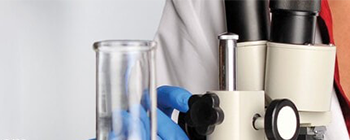Learn More
F(ab')2-Goat anti-Mouse IgG (H+L) Secondary Antibody, PE, eBioscience™, Invitrogen™
F(ab')2-Goat Polyclonal Secondary Antibody
Supplier: Invitrogen 12401087
Description
Description: The goat anti-mouse IgG polyclonal antibody reacts with the heavy and light chains of mouse IgG, with minimal cross reactivity to human, rat, bovine, goat, hamster, and rabbit serum proteins. Reactivity has been shown to IgG1, IgG2a, IgG2b, and IgG3, as well as some reactivity to IgM. The antibody is a F(ab')2 fragment which contains the 2 Fab domains still linked through the hinge region of the immunoglobulin. Removal of the Fc region helps to reduce issues typically found with Fc-mediated binding. This polyclonal has been validated as a secondary reagent (its ability to recognize cells stained with a mouse IgG followed by this polyclonal antibody). Applications Reported: This polyclonal antibody has been reported for use in flow cytometric analysis. Applications Tested: This polyclonal antibody has been tested by flow cytometric analysis of normal human peripheral blood cells. This can be used at less than or equal to 0.25 μg per test. A test is defined as the amount (μg) of antibody that will stain a cell sample in a final volume of 100 μL. Cell number should be determined empirically but can range from 10^5 to 10^8 cells/test. It is recommended that the antibody be carefully titrated for optimal performance in the assay of interest. Excitation: 488-561 nm; Emission: 578 nm; Laser: Blue Laser, Green Laser, Yellow-Green Laser. Filtration: 0.2 μm post-manufacturing filtered.
Anti-Mouse secondary antibodies are affinity-purified antibodies with well-characterized specificity for mouse immunoglobulins and are useful in the detection, sorting or purification of its specified target. Secondary antibodies offer increased versatility enabling users to use many detection systems (e.g. HRP, AP, fluorescence). They can also provide greater sensitivity through signal amplification as multiple secondary antibodies can bind to a single primary antibody. Most commonly, secondary antibodies are generated by immunizing the host animal with a pooled population of immunoglobulins from the target species and can be further purified and modified (i.e. immunoaffinity chromatography, antibody fragmentation, label conjugation, etc.) to generate highly specific reagents.Specifications
| Mouse IgG (H+L) | |
| Polyclonal | |
| PE | |
| Goat | |
| 250 μg | |
| Secondary | |
| 4° C, store in dark, DO NOT FREEZE! | |
| Ig |
| Flow Cytometry | |
| 0.2 mg/mL | |
| PBS with 0.09% sodium azide; pH 7.2 | |
| Affinity chromatography | |
| RUO | |
| Mouse | |
| Liquid |
For Research Use Only.



